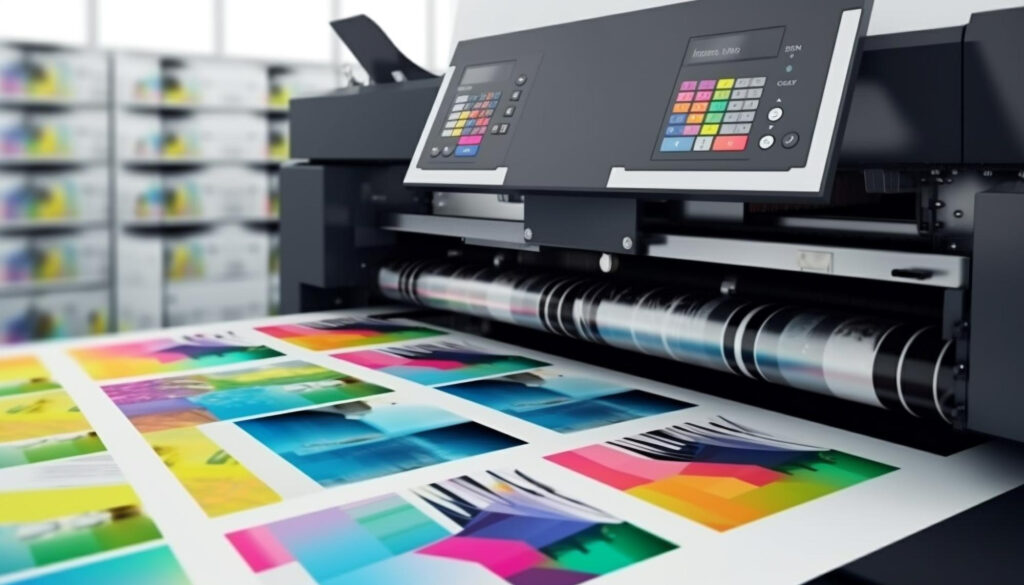In our digital age where screens and images dominate our daily lives, it is no surprise that visual communication has become a powerful tool in the world of advertising. While words have always been a crucial aspect of advertising, the use of graphic printing has opened up a whole new realm of possibilities for brands to connect with their audience. From eye-catching billboards to sleek magazine ads, the visual language of graphic printing has become a staple in contemporary advertising. This mode of communication offers a dynamic and impactful means to convey messages, stirring emotions and leaving a lasting impression on the viewer.
With its ability to transcend language barriers and capture attention in a fast-paced world, it’s no wonder that this visual language has become a key strategy in advertising campaigns. In this article, we will delve into the world of graphic printing in advertising, exploring its history, evolution, and the impact it has on contemporary advertising. Join us as we go beyond words and uncover the power of visual communication in shaping the advertising landscape.
Impact of Visual Branding Strategies
Visual branding strategies are pivotal in today’s rapid-paced advertising landscape, serving to captivate consumers’ attention and make enduring impressions. A well-executed visual brand identity can communicate a company’s values, personality, and unique selling propositions without the need for excessive words.
The influence of visual elements like logos, colors, typography, and imagery is profound. They stir emotions, convey messages, and foster familiarity and trust with the audience. Robust visual branding strategies set businesses apart, cement a strong brand presence, and bolster customer loyalty, ultimately driving sales.
The role of graphic printing in advertising transcends mere aesthetics; it is a powerful tool for brand storytelling. Through the precise use of color, texture, and design, advertisers can evoke specific emotions, reinforce brand identity, and communicate complex messages at a glance. The expertise of companies like Platon Graphics in executing these elements effectively makes them indispensable partners in the advertising industry.
Utilizing Color Psychology Effectively
Utilizing color psychology in contemporary advertising through graphic printing is a potent strategy. Colors evoke emotions and impact consumer behavior, so advertisers must choose wisely to align with brand objectives. Warm hues like red and orange spur urgency and excitement, ideal for promotions.
Conversely, cool hues like blue and green can instill a feeling of tranquility and reliability, making them optimal for healthcare or finance businesses. By understanding the psychological impact of colors and incorporating them strategically in graphic printing, advertisers can enhance the visual language of their campaigns and effectively communicate with their target audience, ultimately driving greater engagement and conversion rates.
Importance of Typography Selection
In the realm of graphic printing for contemporary advertising, the importance of typography selection cannot be overstated. Typography serves as the visual language that communicates a brand’s personality, tone, and message to its audience. The right choice of fonts can enhance the overall aesthetic appeal of an advertisement, capture attention, and effectively convey information. Different typography styles evoke different emotions and perceptions, allowing advertisers to strategically align their messaging with their target audience.
For instance, a sleek and modern sans-serif font may be suitable for a technology brand, while a elegant and script font may be more appropriate for a high-end fashion brand. By carefully selecting typography that complements the overall design and message, advertisers can create a visually compelling advertisement that resonates with their audience, leaving a lasting impression and driving desired actions.
Creating Cohesive Branding Collateral
When it comes to creating cohesive branding collateral, attention to detail and consistency are key. Every element, from color schemes to imagery, must work together harmoniously to reinforce the brand’s identity and message. This includes ensuring that the typography used in all the collateral aligns with the brand’s overall visual language. By maintaining a consistent typography selection across all marketing materials such as business cards, brochures, and websites, a brand can establish a strong and recognizable visual presence.
Maintaining consistency in typography cultivates trust and familiarity among the audience, facilitating easier brand recognition and connection. Moreover, cohesive typography creates a sense of professionalism and attention to detail, enhancing the overall perception of the brand. By carefully curating and implementing typography that echoes the brand’s personality and values, companies can create a cohesive and impactful visual language that speaks volumes to their target audience.
Incorporating Visual Storytelling Techniques
Incorporating visual storytelling techniques is a powerful way to elevate the impact of graphic printing in contemporary advertising. Through the use of compelling visuals and design elements, advertisers can captivate their audience, evoke emotional responses, and effectively convey their brand’s message. Visual storytelling goes beyond simply presenting information; it allows advertisers to create narratives, establish a connection with their audience, and leave a lasting impression.
By strategically incorporating elements such as imagery, color, composition, and typography, advertisers can craft visually engaging narratives that resonate with their target market. Whether it’s through the use of stunning visuals, sequential storytelling, or visual metaphors, incorporating these techniques into graphic printing can elevate the effectiveness and memorability of advertising campaigns. Through grasping the potential of visual storytelling, advertisers can craft immersive experiences that resonate deeply with their audience, leaving a lasting impression.
In the ever-evolving world of advertising, the use of graphic printing has become a powerful tool in capturing the attention of consumers. Through the clever use of imagery, typography, and design, advertisers are able to convey their message in a visually appealing and impactful way. As we have explored in this blog post, the use of graphic printing in contemporary advertising goes beyond words and has the ability to speak to consumers on a deeper level. It is clear that this visual language will continue to play a significant role in the world of advertising, making it an essential skill for marketers and designers alike.






